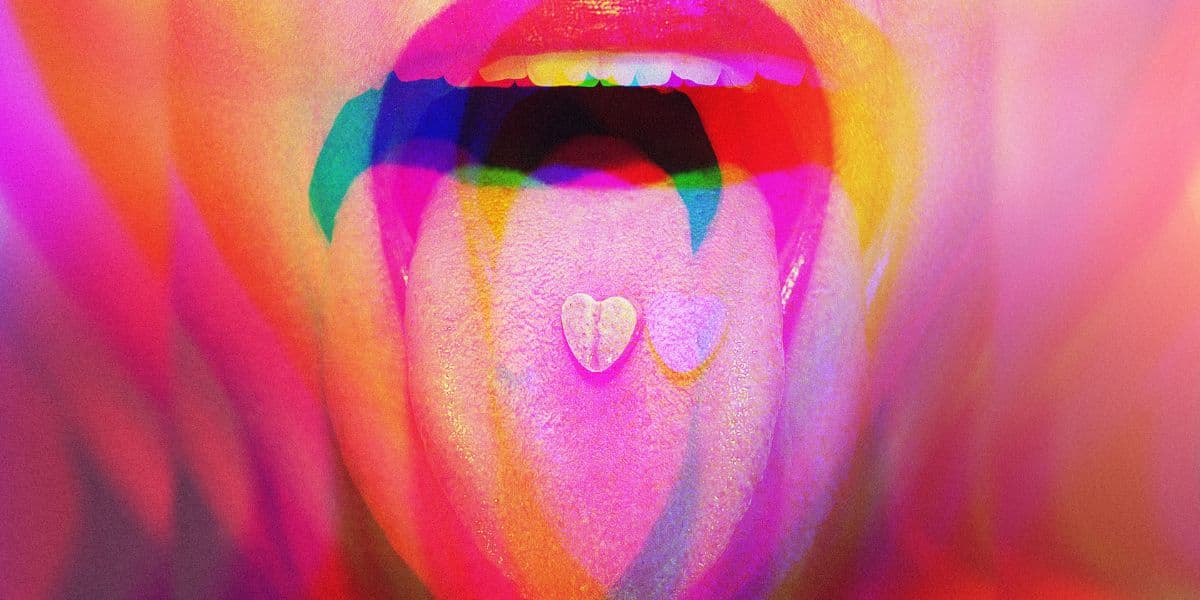What Is Candy Flipping? Mixing LSD and MDMA


Medical Writer:
Reviewer:

Johnny Kim
Executive Psychotherapist
Medical Writer:
Reviewer:

Johnny Kim
Executive Psychotherapist
Candy flipping, a term coined in the rave and festival scenes, refers to the practice of mixing two psychedelic drugs, LSD (lysergic acid diethylamide) and MDMA (3,4-methylenedioxymethamphetamine). This combination of substances is popular among those seeking an intense and unique psychedelic experience, or “trip.”
Users may experience a blend of the profound sensory experiences from LSD and the elevated mood and emotional connection typically induced by MDMA, also known as ecstasy or molly.
Table of Contents
Toggle
Mixing LSD and MDMA: Defining Candy Flipping
Candy flipping involves the simultaneous use of two powerful psychoactive substances: LSD and MDMA. LSD, often referred to as acid, is a potent hallucinogenic drug that significantly alters perception, mood, and cognitive processes. MDMA (ecstasy) is a drug that can make you feel more empathetic, emotionally connected, and more aware of your senses.
The process of candy flipping usually begins with the ingestion of one drug, typically LSD, followed by the other, MDMA, several hours later. The timing is crucial for users aiming to experience the peak effects of both drugs simultaneously. The combination of LSD and MDMA creates a unique experience, often described as a synergy between the visual and cognitive distortions of LSD and the euphoric and social effects of MDMA.

Effects of MDMA and LSD Mixing
The effects of candy flipping can vary widely among people because of differences in physiology, mental health conditions, dosage, and the environment in which the drugs are consumed. Common effects reported by users include:
- Enhanced Visual and Auditory Perceptions: LSD is known for causing vivid hallucinations and changes in sensory experiences, and when combined with MDMA, these effects can become more intense, with colors appearing brighter and sounds more pronounced.
- Elevated Mood and Euphoria: MDMA significantly increases the release of serotonin in the brain, leading to heightened mood, feelings of happiness, and an intense high. When mixed with LSD, the euphoric effects of MDMA can be amplified, creating a profound sense of joy and emotional warmth.
- Increased Energy and Sociability: MDMA is a stimulant that boosts energy levels and promotes social interaction. Combining it with LSD can result in a heightened desire to engage with others, making candy flipping popular at music festivals and social gatherings.
- Altered Sense of Time: Both LSD and MDMA can distort the perception of time. Users often report that time seems to pass more slowly or quickly, adding to the surreal nature of the experience.
Side Effects of Mixing LSD and MDMA
While candy flipping gives the user an intense and pleasurable experience, it also carries significant risks and side effects. The combination of LSD and MDMA can lead to a range of adverse effects, including:
- Elevated Heart Rate and Body Temperature: Both drugs can increase heart rate, body temperature, and blood pressure. When combined, these effects can become more pronounced, leading to dangerous levels of hyperthermia and cardiovascular strain.
- Dehydration and Electrolyte Imbalance: The stimulant properties of MDMA can cause excessive sweating, leading to dehydration and an imbalance in electrolytes. The prolonged duration of the LSD trip exacerbates this risk.
- Mental Health Risks: Mixing LSD and MDMA can exacerbate pre-existing mental health conditions or trigger new ones. Users may experience anxiety, paranoia, and even psychosis, particularly during a bad trip.
- Serotonin Syndrome: Both LSD and MDMA affect serotonin levels in the brain. Mixing these drugs raises the chance of developing serotonin syndrome, a serious condition that can be life-threatening. Symptoms include high body temperature, restlessness, and muscle twitching.
- Cognitive Impairment: The use of these psychoactive substances can lead to short-term cognitive impairment, affecting memory, attention, and decision-making abilities.
Long-term Risks and Effects
Regular use of LSD and MDMA can lead to long-term consequences for both physical and mental health. Although neither drug is considered physically addictive, frequent use can lead to psychological dependence and significant health risks.
- Neurological Damage: Long-term MDMA use can lead to neurotoxicity, damaging serotonin-producing neurons and potentially leading to long-lasting mood disorders and cognitive deficits.
- Mental Health Conditions: Chronic use of LSD and MDMA can exacerbate underlying mental health conditions, such as depression, anxiety, and bipolar disorder. The altered brain chemistry resulting from frequent use can have lasting impacts on emotional stability and cognitive function.
- Tolerance and Dependency: Repeated use of LSD and MDMA can lead to tolerance, where higher doses are needed to achieve the same effects. This can increase the risk of overdose and more severe side effects. Psychological dependency can develop, where people feel unable to enjoy social events or achieve emotional highs without the drugs.
Harm Reduction Strategies
For people who choose to engage in candy flipping despite the risks, harm reduction strategies can help mitigate some dangers, including:
- Safe Environment: Consuming LSD and MDMA in a safe, controlled environment with trusted friends can reduce the risk of accidents and provide support in case of a bad trip.
- Hydration: Staying hydrated and taking regular breaks to cool down can help prevent dehydration and overheating, common risks associated with MDMA use.
- Test Kits: Using drug test kits to verify the purity of substances can help prevent ingesting contaminated or dangerous drugs.
- Moderation: Limiting the frequency and dosage of LSD and MDMA can reduce the risk of developing tolerance and long-term health issues.

LSD and MDMA Addiction Treatment at White Oak Recovery Center
Combining LSD and MDMA can lead to intense experiences. However, it also carries significant dangers and withdrawal symptoms. And although LSD and MDMA are not physically addictive, they can cause psychological dependence.
People who use these substances frequently may become dependent on the intense feelings they provide. This can lead them to continue using the substances despite experiencing negative effects.
For those struggling with psychedelic substance abuse and addiction, White Oak Recovery Center (WORC) provides various evidence-based treatment and therapy options, such as medical detox and dual diagnosis, to help regain control of your life and achieve recovery.
White Oak Recovery Center is a private residential treatment facility with a family-like environment that nurtures a solid foundation for healing and lasting recovery. Our experienced team of licensed medical professionals and addiction specialists collaborate with each resident to create a personalized treatment plan catered to your needs for recovery.
Contact us today. Our caring team of treatment specialists are eager to help you get the help you deserve. A single phone call can be the start of a new life free from addiction.

Am I covered for addiction treatment?
Your insurance may cover treatment. Call now for an entirely free and confidential assessment. Recovery starts with a phone call.

- Schechter, MD, “Candyflipping: Synergistic Discriminative Effect of LSD and MDMA.” Eur J Pharmacol, Jan. 1998.
- Zeifman, Richard J., et al., “Co-Use of MDMA with Psilocybin/LSD may Buffer Against Challenging Experiences and Enhance Positive Experiences.” Scientific Reports, Aug. 2023.
- Straumann, Isabelle, et al., “Acute Effects of MDMA and LSD Co-Administration in a Double-Blind Placebo-Controlled Study in Healthy Participants.” Neuropsychopharmacology, May 2023.
Medical Disclaimer:







